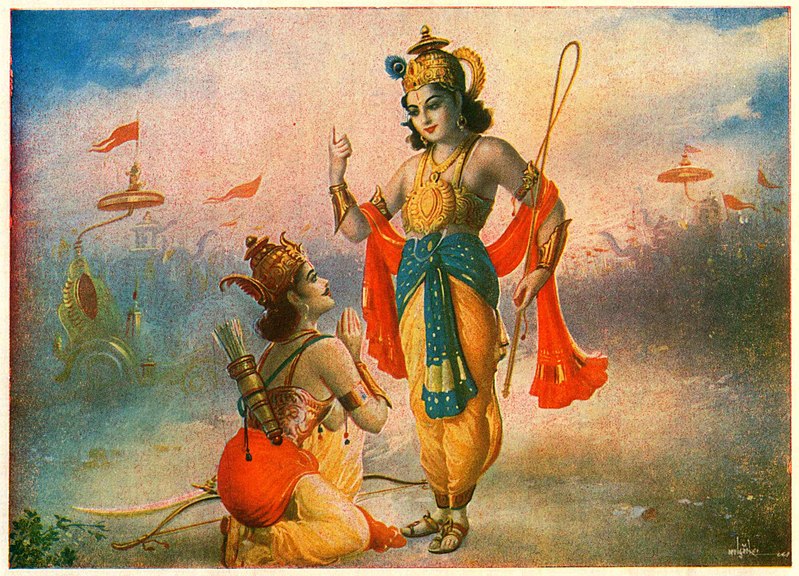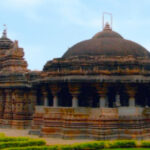Table of Contents
Indian Epics Are More Than Books – A Way of Life
These are the great ancient Indian epics, the Mahabharata and the Ramayana. These books are intrinsic to Indian culture and heritage and their philosophies are ingrained into the psyches of people. The influence of these Indian epics extend much beyond the shores of the country.

The Mahabharata-The Indian Epic About The Philosophy of Karma
The Mahabharata is a fascinating story of a warring clan who fight for a kingdom, Five brothers who were known as the Pandavas are pitted against their cousins who are 100 in number and are known as the Kauravas. The story is a rollercoaster ride of human emotions that range from love, passion, hate, pity, joy, sadness, and much more. The cousins go to war in what comes to be known as the Kurukshetra war. The two warring armies are pitted against each other and in the end, the Pandavas emerge victorious in spite of the scheming and deceitful ways of their cousins. The Mahabharata also houses the famous Bhagavad Gita which is the essence of Hindu philosophy. The famous philosophy of Karma is found in the Mahabharata. Of course the Mahabharata makes for a great and epic story that is filled with all the human emotions, however, at a deeper level it teaches and propagates a way of life. The essence of the Bhagavad Gita and the Mahabharata is a shout out to mankind to focus on their actions or work without unduly worrying about the results as all factors may not be in your control, The Mahabharata is sure to touch you at various levels and leave you transformed.
History of The Mahabharata

The Mahabharata is one among the two most important ancient Indian epics which was written in Sanskrit. The Mahabharata was written by an ancient Indian sage known as Vyasa. The earliest written version of this epic has been traced to around 400 BCE while the actual origin of the epic is placed around the 8th or 9th century. The original Mahabharata was written in verse form and contains 200,000 verse lines and has been regarded as the longest poem ever written. The Mahabharata is said to be 10 times longer than the Iliad and the Odyssey combined together.

The Ramayana-The Indian Epic About The Philosophy of Dharma
The Ramayana is the second of the great ancient Indian epics. The Ramayana is the story of the life of the Prince of Ayodhya, Rama. The story traces his life from his birth and poignantly in verse form describes his travails as he is banished to the forests. He leaves to live in the forests followed by his faithful wife Sita and brother Lakshmana. In the course of 14 years of exile, they undergo many adventures and hardships. Sita is kidnapped by a demon king named Ravana and Rama along with Lakshmana and Hanuman along with a ragtag army of monkeys and other animals give chase. Finally, in a fierce battle, Ravana and his army is vanquished and Sita rescued.
History of the Ramayana
Ramayana is attributed to an ancient sage called Valmiki and the Ramayana predates the Mahabharata. The earliest written version of the Ramayana can be traced as far back as the 6th century BCE. According to ancient Indian tradition, time is cyclical and is divided into 4 periods known as Yugas. The cycle of time starts with the Satya Yuga followed by Treta Yuga, Dvapara Yuga, and finally the Kali Yuga. The Ramayana is traced to the Treta Yuga while we are currently in the Kali Yuga.which is supposed to have started in 3102 BCE, which also marked the end of the Dvapara Yuga, the period to which the Mahabharata is traced. The heritage and deep influence of the Ramayana can be found today in India, Srilanka, Thailand, Cambodia, Nepal, Malaysia, and Indonesia.

The Philosophy of the Indian Epics
The Mahabharata and the Ramayana are treatises on life and the challenges it comes up with. The epics are indeed a celebration of life as well as beacons on what is right and what is wrong. Both books carry the undercurrent that ultimately good triumphs over evil and truth gets the better of falsehood. In both the epics the characters who are evil, devious, and scheming to meet their retribution in the end. Good faces challenge after challenge, test after test, but emerges victorious in the end. The books demonstrate in story form the proverbial expression that the windmills of the Gods grind slowly.
If the Indian Epic Mahabharata is all about the philosophy of Karma, where everyone is required to do their duty without worrying about the outcome and the belief that ones’ actions will determine their fate; the Indian Epic Ramayana is about the philosophy of Dharma, doing what is morally correct and righteous. It is of sticking on to your principles even in the face of death. The Ramayana profiles the concept of how an idea King, husband, son, father, wife, daughter, etc., should be.

The relevance of the Indian Epics in the Modern World
Are these great and ancient epics relevant in the modern world today?
Yes, very much, in fact, more so in the turbulent times that we are facing today. The world though, on the one hand, has shrunk with the force of technology, still, it is a troubled place with terror and war raising their ugly head across the world. These epics talk about the futility of war, how war ultimately leads to nothing but destruction, and what is needed is peace, love, and goodness.
The Indian epics are not only chronicles of a wonderful history but are littered with gems of wisdom which are not only relevant today in our modern lives but if harnessed properly can serve as an excellent guide to a better quality of life and a better world. The epics are not only great stories but are great motivational literature where one is bound to find answers to the most vexing situations in life if one were to dive deep into the font of knowledge that they hold.
It is for these reasons that both the epics have been rewritten and translated into hundreds of languages, movies and television series have been made, dramas and dance performances enacting them are staged across thousands of stages across India and Asia.
The fascination with the great ancient Indian epics, the Mahabharata and the Ramayana are enduring and their charm transcends the boundaries of time, place, and religion.
Is your interest kindled? Would you like to lose yourself in the fascinating world of the Indian epics Mahabharata and Ramayana, then just check out the links below.
For Children in Comics Form.








